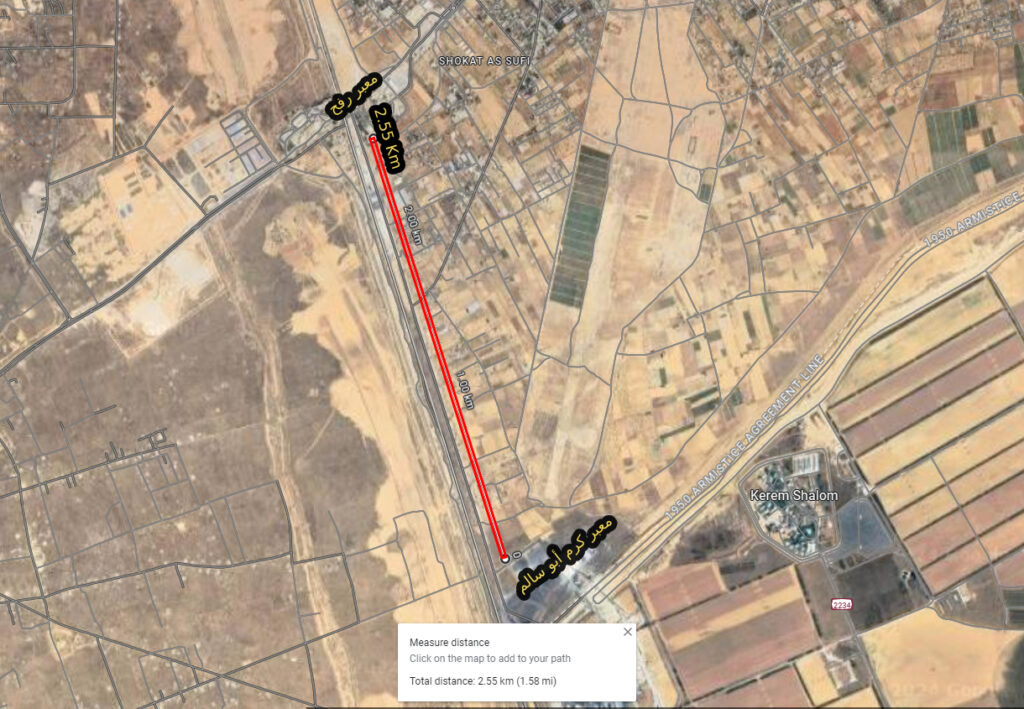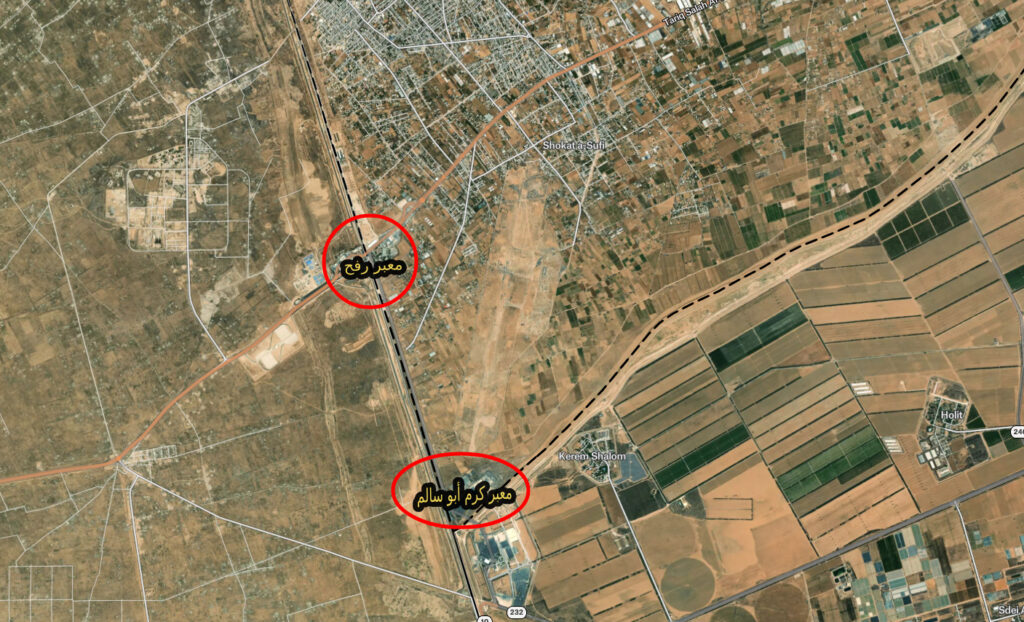Suddenly, and within a few hours, Israeli tanks managed to reach the Rafah border crossing on Tuesday morning, May 7, 2024, and the Israeli army subsequently announced its full control over this strategic site in the Gaza Strip.
This rapid takeover raises several questions: How did the occupation manage to reach the Rafah crossing with such speed and ease? Why wasn’t there fierce resistance, especially since Rafah is considered one of Hamas’ last strongholds, with four battalions in the city?
The timing of the incursion and the route taken by the occupation
Upon closer examination of the area where the occupation forces penetrated, it becomes clear that this military move carries more symbolic significance than just being an Israeli military achievement.

The Israeli vehicles set out from the Kerem Shalom area, which includes the Kerem Shalom crossing designated for commercial truck traffic only, in the middle of Tuesday night, accompanied by heavy air cover.
The vehicles followed a paved road used by trucks to travel between the Rafah and Kerem Shalom commercial crossings, a road that runs parallel to the Egyptian-Palestinian border and is only 50 meters away from the wall.
The area penetrated by the occupation forces
Looking at the area traversed by the occupation forces, the distance covered was 2.6 kilometers from the starting point of the vehicles at Kerem Shalom to reaching the Rafah border crossing.

Maps show that the area is militarily porous, bordered on the southwest by the Philadelphia axis and the separation wall with the Egyptian side, while on the northeast side, there is exposed agricultural land, along with a few scattered buildings.
It is clear from the above that reaching from Kerem Abu Salem crossing to Rafah crossing was very easy, requiring no significant effort, given the exposed nature of the area and the very short distance, especially since the occupation had carried out fire belts in the area in preparation for the incursion.
This scene recalls what happened at the beginning of the occupation’s invasion of the Gaza Strip, when it entered the Twin Towers area east of Gaza City and managed to control it, reaching the Gaza port.
There was also another similar area when the occupation penetrated from the Street 10 area, reaching Salah al-Din Street, which extends from the northernmost to the southernmost part of the Gaza Strip.
However, the occupation’s arrival at the Rafah crossing and its control over it carries political and strategic dimensions for the occupation, especially as it came at an important time after Hamas confused the cards for the occupation by agreeing to the ceasefire proposal presented by the mediators.
Messages from the occupation by occupying the Rafah crossing
As soon as the occupation vehicles reached the Rafah crossing, soldiers documented the moment through their mobile devices, and several videos were broadcasted through Hebrew groups and circulated by the media.
Many of the videos showed scenes of the vehicles touring inside the crossing yards and demolishing some of its symbols.
Soldiers also lowered the Palestinian flag from some of the poles and raised the Israeli flag in its place.
Political and strategic analyst Saeed Ziad, in a tweet on his X account, believes that the occupation wanted to convey a reassuring message to its internal community, which was shaken yesterday after Hamas’ sudden response to the deal proposal, “that there is something military that can be done, and that we have taken control of a vital target within hours, and we have invaded Rafah as we promised.”
Ziad considers that “this rapid operation came as a fire response to Hamas’ response, and a spit in the faces of all mediators, meaning that your efforts are worthless if you are not fully biased towards Israel.”
Officially, the American CNN network quoted a source familiar with the Israeli military operation as saying that the Israeli move at the Rafah crossing would be “extremely limited” and aimed at continuing pressure on Hamas to agree to a deal that would lead to a ceasefire and a prisoner release agreement.
The source said that the operation is not the largest incursion into Rafah, about which Israel has been sending public messages for weeks.
A means of pressure on the Palestinians
With the Israeli forces occupying the crossing, they have effectively taken control of all crossings in the Gaza Strip, so no one can enter or leave the Strip except under their supervision.
The Rafah crossing was the only outlet for the two million and two hundred thousand residents of the Strip, through which some humanitarian aid entered, amid the closure by the occupation of the other commercial outlets it controls.
As soon as the Israeli forces arrived at the crossing, the Crossing Authority announced a complete halt to travel movement and the entry of humanitarian aid from the crossing.
On its part, the Gaza government’s media office considered the occupation of the crossing as “a continuation of the genocidal war waged by the Israeli occupation army against our Palestinian people in all the governorates of the Gaza Strip. The occupation has decided to exacerbate the humanitarian situation exponentially and catastrophically.”
It added: “The occupation is doing this by killing more civilians, children, and women, whose number has increased to more than 35 martyrs in the last 12 hours, halting the entry of aid, closing the Rafah and Kerem Abu Salem crossings, shutting down hospitals, and targeting schools that accommodate hundreds of thousands of displaced people.”
Sunna Files Free Newsletter - اشترك في جريدتنا المجانية
Stay updated with our latest reports, news, designs, and more by subscribing to our newsletter! Delivered straight to your inbox twice a month, our newsletter keeps you in the loop with the most important updates from our website












